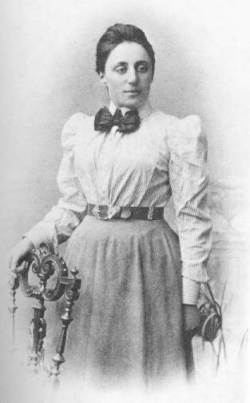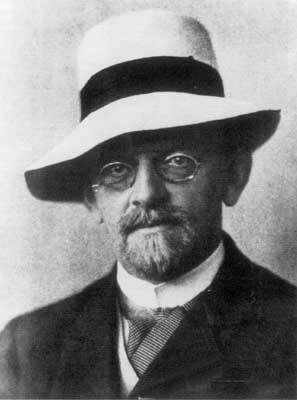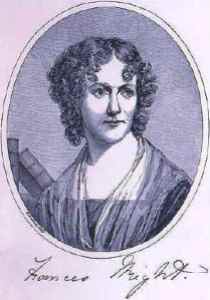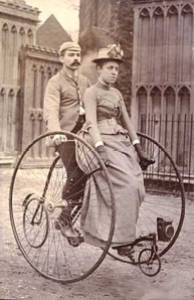“I never felt I could give up my life of freedom to become a man’s housekeeper. When I was young, if a girl married poor she became a housekeeper and a drudge. If she married wealthy, she became a pet and a doll.” ~Susan B. Anthony
When I first began reading about woman suffrage several years ago, I wondered why the only name I remembered from school was Susan B. Anthony. There were so many women involved in the movement that played major roles – Elizabeth Cady Stanton and Lucy Stone, two about whom I’ve already written– and that’s before you even begin to talk about the women who brought the movement home so to speak, such as Alice Paul and Lucy Burns. One reason is that women have often been slighted in history, but if you had to choose one woman to represent the movement, why Susan B Anthony?
Of course, I can’t be sure, but one reason I would choose her is because of the major players, Anthony was probably the most single minded and driven. She came to the movement late, but when she did, she never wavered, and when it was clear that the goal wouldn’t be reached in her lifetime, she spent considerable time mentoring younger women to carry on the fight. She was tireless. While Elizabeth Cady Stanton might be seen as the philosopher of the movement, Susan was the tactician, the organizer. She organized national women’s conventions almost every year after the Civil War, selecting places and speakers, raising money, organizing local women’s groups, traveling extensively to promote the cause and rally the troops. When others might have given up, she said “failure is impossible.”
Susan Brownell Anthony was the second of seven children born to Lucy Read and Daniel Anthony on February 15, 1820. While Elizabeth Cady Stanton and Lucy Stone grew up with the idea that it was a disadvantage to be a woman; that wasn’t the case with Susan. Daniel Anthony was a Quaker who instilled in his children a sense of their own self-worth and that of all human beings. Although women and men sat on opposite sides of the meeting house, Susan’s grandmother was an elder and her aunt preached freely when she was moved to do so. Her grandfather believed so strongly in education that he built a school on his own property for his children and the neighbors. Later when Susan’s teacher didn’t see the need to teach girls long division, Daniel Anthony did the same thing.
The Anthonys believed in education, self-determination and self-discipline. Daniel Anthony was a good Quaker, but he also had an independent streak. When he decided to marry Lucy Read a non-Quaker, his meeting disapproved, but he stood his ground. Lucy was not so sure about giving up her bright colors and dances, but gave in and they were married. As time went on they both became involved in the temperance and abolitionist movements, and they passed these values on to their children.
When Susan was young, the family was well off. Her father owned a successful cotton mill, but they didn’t live a life of leisure. Many of the mill workers boarded with the family, so Susan’s mother was constantly working and Susan helped out as soon as she was old enough. Her father started an evening school for the mill workers and as soon as Susan and her elder sister Guelma were old enough they began teaching in the home school or nearby villages.
Susan and Guelma were both able to go to Deborah Moulson’s Female Seminary, a boarding school in Philadelphia, but in the depression of 1837 their father’s business failed and they had to return home. At 17, Susan was well qualified to teach, so she did her part to support the family and work to pay off their debts. In this endeavor, she would encounter her first real disadvantage being a woman, when she realized that she was paid ¼ the salary of men doing the same job, even when she was more qualified. This experience would prompt her to advocate for equal pay for equal work during most of her women’s rights work.
After several years of hard work, in 1845 when Susan was 25, she moved with her parents and two siblings to their new home on a small farm near Rochester, NY. The farm was purchased by Lucy’s brother with money which had been left to her by her father. If the money or the farm had been put in Lucy’s name it would legally belong to Daniel and could then be seized by his creditors. The Quaker’s of Rochester welcomed the Anthony family and introduced them to a very active anti-slavery community. Here Susan learned about the Underground Railroad and began reading The Liberator, William Lloyd Garrison’s anti-slavery paper.
Susan soon left the farm to accept a teaching position at the Canajoharie Academy, where her uncle James Read was a trustee. It was here that Susan made her first public speech. In both the temperance and abolitionist movements there was disagreement, sometimes violent disagreement, about whether or not to allow women to speak to “promiscuous” meetings, meetings including both men and women. In Canajoharie, the Sons of Temperance refused to allow women to speak, so the women formed the Daughters of Temperance. Most of the women were uneasy at the idea of speaking in public, but Susan, raised in Quaker meeting where women were welcome to speak, thought nothing of it. Her speech at their first meeting, attended by approximately 200 men and women, was a success.
Because of the distance to Rochester, she spent her vacations with Guelma and Hannah and their families or with Lydia Mott, one of her former teachers at Deborah Moulson’s school and cousin of Lucretia Mott. From Lydia, she learned more about the abolitionist movement. It was during this time, in 1948, that the Seneca Falls Woman Rights Convention was held, and attended by Daniel and Lucy Anthony and Susan’s younger sister Mary. All three were very impressed with the speakers, especially Elizabeth Cady Stanton and Lucretia Mott, and signed the Declaration of Sentiments, the statement of resolutions for women’s rights that resulted from the convention. When Susan heard about this, she wasn’t opposed, but she found it surprising and somewhat amusing. After all, she hadn’t experienced the opposition that many women faced.
 Although she didn’t embrace the women’s movement immediately, she was very intrigued by what her family was telling her about the women involved, so she welcomed the opportunity to get to know Elizabeth Cady Stanton when she met her in Seneca Falls in 1851. It was the beginning of a friendship that would last a lifetime and would be the foundation of the women’s suffrage movement in the United States.
Although she didn’t embrace the women’s movement immediately, she was very intrigued by what her family was telling her about the women involved, so she welcomed the opportunity to get to know Elizabeth Cady Stanton when she met her in Seneca Falls in 1851. It was the beginning of a friendship that would last a lifetime and would be the foundation of the women’s suffrage movement in the United States.
In 1852, Susan attended her first women’s rights convention in Syracuse, while at the same time becoming more and more active in the abolitionist movement. She began lecturing for William Lloyd Garrisons Anti-Slavery Association in 1956, and started to experience the opposition directed at women such as the Grimke sisters, Abby Kelly, and Lucy Stone when they lectured. By the time of the Civil War, Susan was convinced of the need for women’s rights reform and suffrage, and was working closely with Elizabeth Cady Stanton to bring it about.
Although, she had received a couple of offers of marriage, Susan chose to remain single. She didn’t see the need to tie her self to a man and thereby restrict her own actions and work. She was often impatient with the women who did, even with Elizabeth and Lucy, and was critical of their divided loyalties. After the Civil War, Elizabeth and Susan worked very closely. While Elizabeth still had children at home, Susan did much of the traveling to spread their message. She organized annual women’s rights conventions, doing most of the logistical work while Elizabeth did most of the writing, including many of Susan’s speeches. Together they published The Revolution, a newspaper devoted to women’s issues. Elizabeth was the editor, and Susan was the publisher and business manager. Elizabeth always had a very broad even radical view of what was needed and should be fought for; Susan felt that if suffrage was achieved all the rest would follow.
Several major strategies were used during those years to approach the suffrage question. One, championed initially by Victoria Woodhull, was that women already had the vote by virtue of the 14th Amendment and should just do it. Women were citizens and therefore couldn’t be denied one of the rights of citizenship – voting. In preparation for the 1872 presidential election, Susan organized women to register to vote. Many were turned away, but Susan and a group of women were successful at registering and later casting their votes for president. Two weeks later, she was arrested and eventually tried and convicted for “knowingly casting an illegal vote in a federal election.” She was fined $100, which she refused to pay. The result was probably a public relations victory on her side. No attempt was ever made to make her pay the fine and she arranged for the trial transcripts to be printed and distributed, promoting her cause.
Susan lectured and campaigned in every state promoting local and state suffrage for women, but she always believed that the solution was a federal amendment to the Constitution. In 1878, she finally succeeded in getting a proposed amendment introduced into Congress. Proposing it as the sixteenth amendment, it was introduced every year until 1919 when it finally passed as the Nineteenth Amendment to the Constitution.
As with most of the original suffragists, Susan wouldn’t live to see the passage of the amendment she had worked tirelessly to bring about. Her last appearance before the Senate’s Select Committee on Woman’s Suffrage was in 1902 because of failing health, but she made one last speech in 1906 on her 86th birthday one month before she died. Surveying the women who had joined the movement, many of whom she had mentored, she declared that “ with such women consecrating their lives – Failure is Impossible.”

Photograph by James Parrish
Resources
History of Woman Suffrage by Elizabeth Cady Stanton et. al.
The Life and Work of Susan B. Anthony by Ida Husted Harper
Sisters: The Lives of America’s Suffragists by Jean H. Baker
Susan B. Anthony by Alma Lutz
Trial Homepage – nice write up of her registration, vote, and the events leading up to the trial as well as links to the trial transcript.
Lucy Stone – Abolitionist and Suffragist
Elizabeth Cady Stanton – Suffragist and Women’s Rights Activist







































